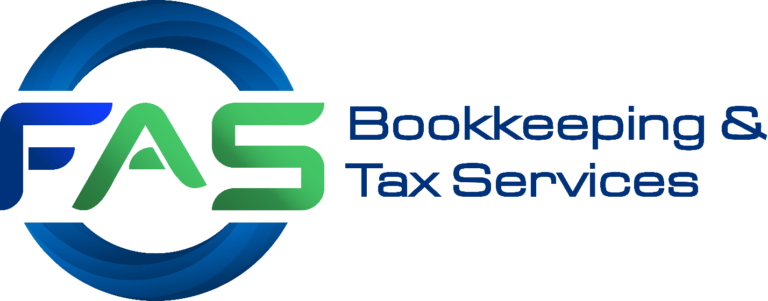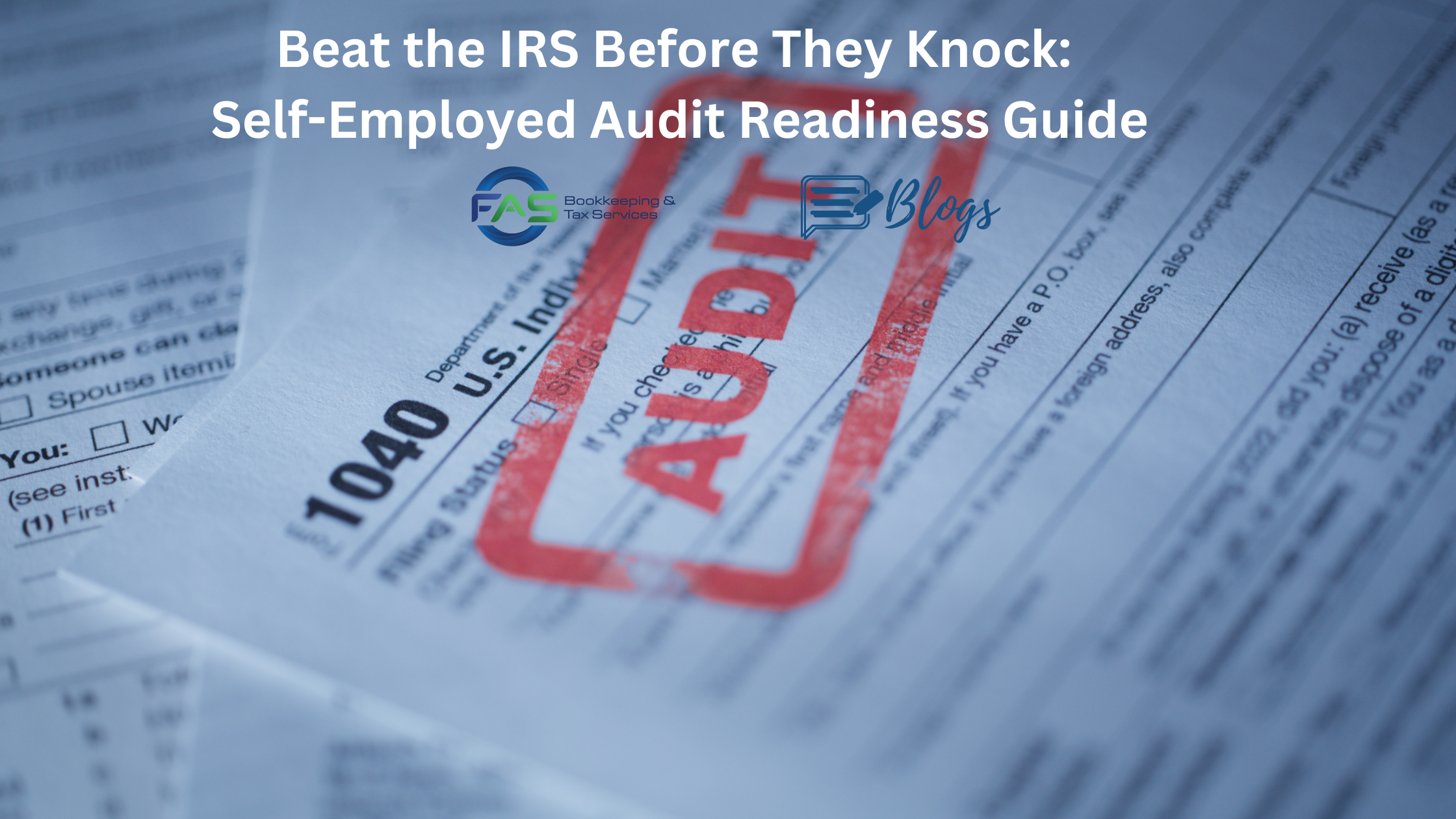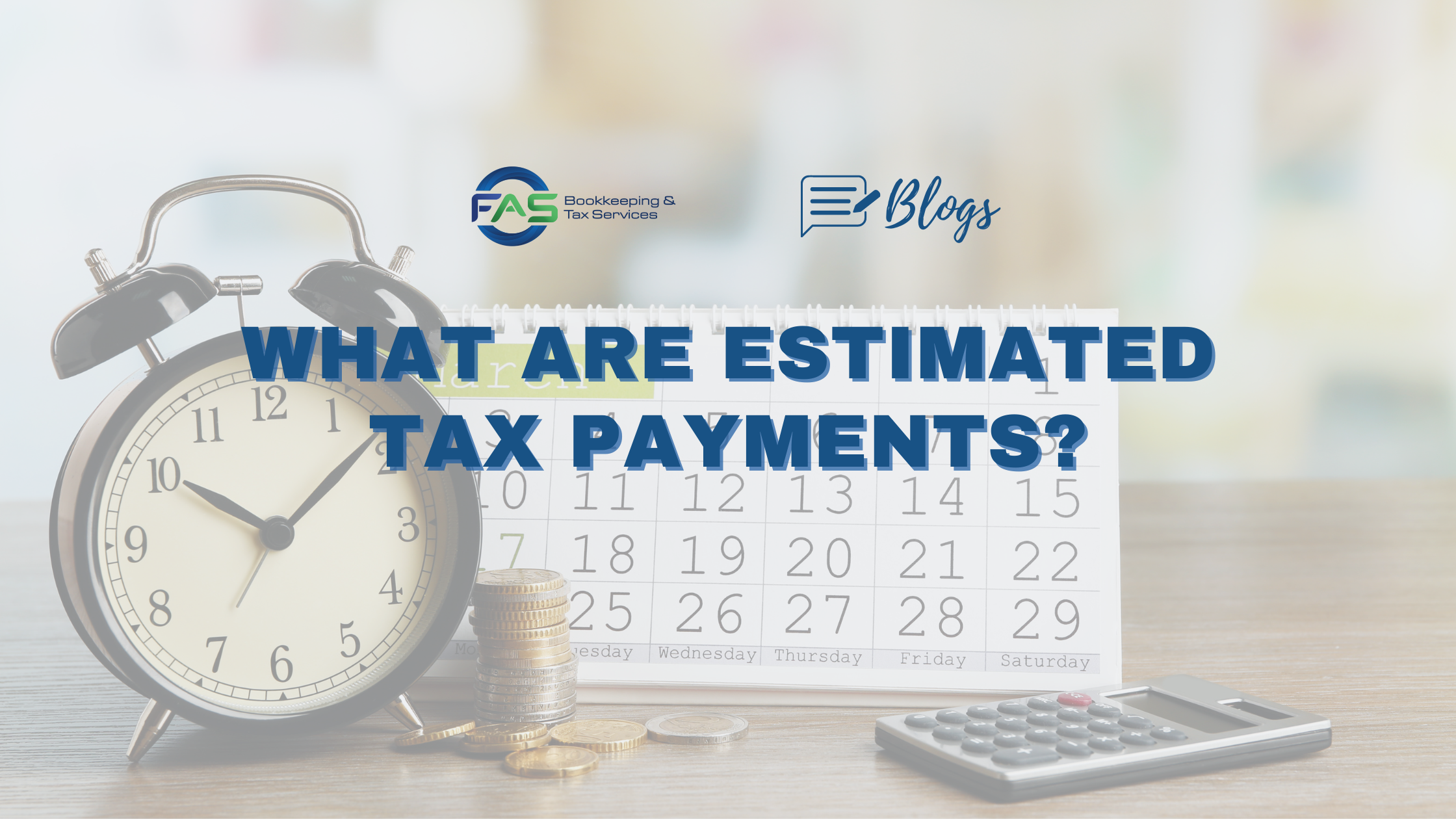What Are Estimated Tax Payments?
Estimated tax is the method used to pay tax on income not subject to withholding, such as income from self-employment, interest, dividends, alimony, and rent and gains from the sale of assets, prizes, and awards. You also may have to pay an estimated tax if the income tax being withheld from your salary, pension, or other income is insufficient. Here’s what you should know about estimated tax payments:
Filing and Paying Estimated Taxes
Both individuals and business owners may need to file and pay estimated taxes, which are paid quarterly. The first estimated tax payment of the year is ordinarily due on the same day as your federal tax return is due.
If you do not pay enough by the due date of each payment period, you may be charged a penalty even if you are due a refund when you file your tax return.
If you are filing as a sole proprietor, partner, S corporation shareholder, or self-employed individual, you generally have to make estimated tax payments if you expect to owe tax of $1,000 or more when you file your return. If you are filing as a corporation, you generally have to make estimated tax payments for your corporation if you expect it to owe tax of $500 or more when you file its return.
If you had a tax liability for the prior year, you might have to pay estimated tax for the current year, but if you receive salaries and wages, you can avoid having to pay estimated tax by asking your employer to withhold more tax from your earnings.
Special rules apply to farmers, fishermen, certain household employers, and certain higher taxpayers. Please call the office for assistance if any of these situations apply to you.
Who Does Not Have to Pay Estimated Tax
You do not have to pay estimated tax for the current year if you meet all three of the following conditions:
- You had no tax liability for the prior year
- You were a U.S. citizen or resident for the whole year
- Your prior tax year covered a 12-month period
If you receive salaries and wages, you can avoid paying estimated tax by asking your employer to withhold more tax from your earnings. To do this, file a new Form W-4 with your employer. There is a special line on Form W-4 for you to enter the additional amount you want your employer to withhold. You had no tax liability for the prior year if your total tax was zero or you did not have to file an income tax return.
Calculating Estimated Taxes
To figure out your estimated tax, you must calculate your expected adjusted gross income, taxable income, taxes, deductions, and credits for the year. If you estimated your earnings too high, complete another Form 1040-ES, Estimated Tax for Individuals, worksheet to re-figure your estimated tax for the next quarter. If you estimated your earnings too low, again complete another Form 1040-ES worksheet to recalculate your estimated tax for the next quarter.
Try to estimate your income as accurately as possible to avoid penalties due to underpayment. Generally, most taxpayers will avoid this penalty if they owe less than $1,000 in tax after subtracting their withholding and credits or if they paid at least 90 percent of the tax for the current year or 100 percent of the tax shown on the return for the prior year, whichever is smaller.
When figuring out your estimated tax for the current year, it may be helpful to use your income, deductions, and credits for the prior year as a starting point. Use your prior year’s federal tax return as a guide, and use the worksheet in Form 1040-ES to figure your estimated tax. However, you must adjust to any changes in your situation as well as recent tax law changes.
Estimated Tax Due Dates
For estimated tax purposes, the year is divided into four payment periods, each with a specific payment due date. For the 2023 tax year, these dates are April 18, June 15, September 15, and January 16, 2024.
If you file your 2023 tax return by January 31, 2024, and pay the entire balance due with your return, you do not have to pay estimated taxes in January.
If you do not pay enough tax by the due date of each of the payment periods, you may be charged a penalty even if you are due a refund when you file your income tax return.
Electronic Federal Tax Payment System
The easiest way for individuals and businesses to pay their estimated federal taxes is to use the Electronic Federal Tax Payment System (EFTPS). Make ALL of your federal tax payments, including federal tax deposits (FTDs), installment agreements, and estimated tax payments, using EFTPS. If it is easier to pay your estimated taxes weekly, bi-weekly, monthly, etc., you can, as long as you have paid enough by the end of the quarter. Using EFTPS, you can access a history of your payments to know how much and when you made your estimated tax payments.
Don’t hesitate to call us if you have any questions about estimated tax payments or need assistance setting up EFTPS.





